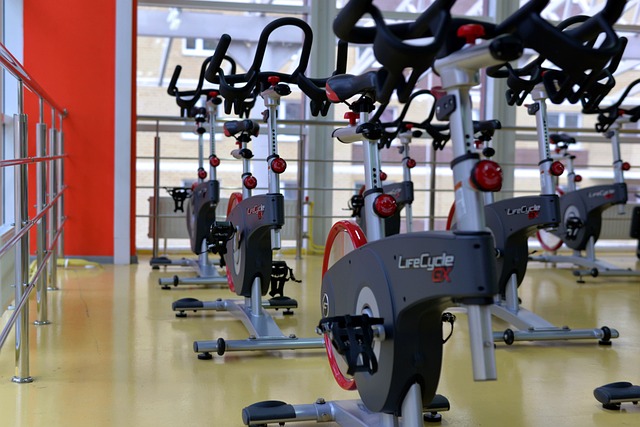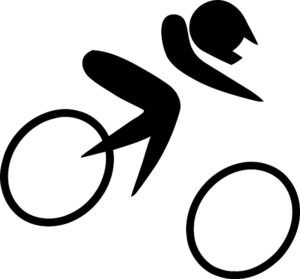
When cycling at night, having a high-performance flashlight is crucial for both visibility and safety. The ideal flashlight for night cycling should provide ample lumen output to illuminate your path, strike a balance between brightness and battery efficiency with adjustable settings, and feature robust construction with secure attachment options. It should also be versatile, offering different light modes like steady and flashing patterns, and include a red rear-facing light for brake signals and visibility compliance. Additionally, pairing your flashlight with reflective gear enhances safety, especially in adverse weather conditions. A strategic placement of the flashlight, away from oncoming traffic to avoid blinding them, ensures optimal illumination without causing discomfort. For added safety, a headlamp or handheld flashlight can be useful for off-road navigation or maintenance tasks. Ensure your flashlight is waterproof and durable to maintain functionality in all conditions. Incorporating reflective materials on your person and bicycle also significantly increases your visibility. Flashlights for night cycling and biking are not just a convenience but an essential safety tool, particularly for endurance riders who navigate through the early hours of the morning. This combination of technology and practice can greatly reduce the risk of accidents and contribute to a safer nighttime cycling experience.
Navigating roads under the cover of darkness can be a harrowing experience for cyclists. Ensuring visibility is paramount for safety and peace of mind. This article delves into the critical role flashlights play in augmenting nighttime bike safety, offering guidance on selecting the most effective illumination tools, their optimal placement, and strategies to enhance visibility. From picking the right flashlight to complementary safety measures, we explore how these lighting solutions have significantly improved the night cycling landscape for many. Join us as we shed light on the essentials of staying safe and seen when pedaling in the dark with “Flashlights For Night Cycling And Biking.”
- Understanding the Importance of Visibility for Night Cyclists
- The Role of Flashlights in Enhancing Bike Safety at Night
- Selecting the Right Flashlight for Your Nighttime Rides
- Strategic Placement and Use of Flashlights on Your Bike
- Tips for Maximizing Your Flashlight's Effectiveness at Night
- Complementary Safety Measures to Pair with Your Flashlight
- Real-Life Examples: How Flashlights Have Improved Nighttime Cyclists' Safety
Understanding the Importance of Visibility for Night Cyclists

When navigating the roads after dusk, visibility becomes a paramount concern for night cyclists. Flashlights for night cycling and biking play a critical role in ensuring that cyclists are seen by motorists, which is essential for safety and preventing accidents. A well-positioned flashlight can illuminate the path ahead, allowing cyclists to avoid potential hazards such as potholes, debris, or unexpected obstacles. More than just an accessory, a flashlight enhances the rider’s field of vision, contributing to a safer and more confident ride.
From a safety perspective, the use of flashlights for night cycling and biking is not merely about personal comfort but also about adhering to local traffic laws and regulations. Many regions mandate that bicycles be equipped with working lights both in the front and back when riding at night. A bright flashlight on the handlebars or helmet not only complies with these regulations but also significantly increases a cyclist’s visibility. It’s important for riders to select a flashlight model that offers a reliable light output, preferably with multiple modes—steady beam, flashing, and possibly red rear lights to signal brake lights—to maximize the potential for being seen by others sharing the road. This proactive approach to visibility can make all the difference in ensuring a safe and enjoyable cycling experience at night.
The Role of Flashlights in Enhancing Bike Safety at Night

Flashlights play a pivotal role in enhancing visibility and ensuring safety for cyclists during nighttime rides. Equipping your bicycle with a reliable flashlight not only illuminates the path ahead but also makes you more conspicuous to motorists and pedestrians, significantly reducing the risk of accidents. When selecting a flashlight for night cycling and biking, consider models that offer a balance between throw distance and width of light beam to both see far into the distance and be seen from all angles. The best flashlights for this purpose feature high lumens output, durable construction, and are easy to attach to your bicycle. Additionally, they should have adjustable brightness settings to conserve battery life when full illumination isn’t necessary and to avoid blinding oncoming traffic.
The strategic placement of flashlights is also crucial for night biking safety. A front light should cast a beam far enough ahead to reveal potential hazards, while rear lights ensure that you are visible from behind. Reflective gear and clothing complement flashlights by reflecting ambient light back to the source, which is especially useful in foggy or rainy conditions. Flashlights For Night Cycling And Biking should be chosen with a focus on reliability, as a dead battery at night can lead to dangerous situations. Investing in high-quality, rechargeable flashlights for your cycling endeavors during the dark hours not only enhances personal safety but also provides peace of mind, allowing you to enjoy your ride without compromising on visibility or safety.
Selecting the Right Flashlight for Your Nighttime Rides

When embarking on nighttime rides, selecting the appropriate flashlight is paramount for both your visibility and safety. A flashlight for night cycling and biking should not only illuminate your path but also enhance your presence to motorists and fellow pedestrians. Opt for a model with a high lumen output to ensure your surroundings are well-lit, eliminating shadows that could obscure obstacles or hazards on the road. Additionally, consider a flashlight with multiple modes, including steady beams and flashing patterns, as these can increase conspicuity and draw attention more effectively than a static light.
The best flashlights for night cycling and biking are those that offer a balance between brightness, battery life, and ease of attachment to your bike. Look for models with durable, water-resistant construction and sturdy mounts or brackets designed to securely attach to your handlebars or helmet. A light that can be easily operated with one hand is also beneficial, as you’ll want to keep your hands free while navigating. Ensure the flashlight’s beam has a wide-enough throw to light up the road ahead and narrow enough to focus on immediate obstacles. With thoughtful selection, your chosen flashlight will serve as an invaluable tool for maintaining safety during those nighttime rides.
Strategic Placement and Use of Flashlights on Your Bike

When cycling at night, strategic placement and the effective use of flashlights are pivotal for both your safety and visibility on the road. A brightly shining light directly ahead can momentarily blind other drivers or pedestrians, potentially leading to accidents. To avoid this, position your flashlight so that its beam illuminates the path ahead without dazzling oncoming traffic. Mounting the flashlight on your handlebars at a slight angle away from your direct line of sight can help mitigate this risk while ensuring you have ample light to navigate safely. Additionally, consider attaching a red rear-facing light to enhance your tail light’s visibility. This not only adheres to local regulations but also signals your presence and direction of travel to traffic from behind.
Moreover, using flashlights for night cycling and biking isn’t just about having lights on your bike; it’s about creating a comprehensive lighting strategy. Carry a headlamp or a handheld flashlight that can be used when you encounter unexpected obstacles off the beaten path or need to make adjustments to your bike during a stop. This versatility allows you to use your hands freely, which is crucial when dealing with uneven terrain or making repairs. By integrating a flashlight into your night cycling gear and positioning it thoughtfully, you enhance your own awareness of the environment and ensure that other road users can see you clearly, promoting a safer experience for everyone involved.
Tips for Maximizing Your Flashlight's Effectiveness at Night

When cycling at night, visibility is paramount for safety and peace of mind. A reliable flashlight plays a critical role in ensuring you are seen by motorists and pedestrians alike. To maximize your flashlight’s effectiveness during night cycling and biking, consider the following tips. Firstly, opt for a flashlight with a high lumen output; this determines how bright it is. A powerful beam can illuminate the road ahead, helping you to see potential hazards and navigate through unlit areas with confidence. Secondly, choose a flashlight with a durable design that can withstand the elements and frequent handling without compromising its performance. Additionally, select a flashlight with adjustable brightness settings; this allows you to conserve battery life when full intensity isn’t necessary, such as in well-lit areas or during long rides. Attach the flashlight securely to your bike, ensuring it points directly ahead and is positioned at a height that avoids obstruction from your body or handlebars. By following these guidelines, you can enhance the effectiveness of your flashlight for night cycling and biking, promoting both your safety and visibility on the road.
Complementary Safety Measures to Pair with Your Flashlight

When enhancing your visibility at night while cycling, a flashlight for night cycling and biking is just one component of a comprehensive safety strategy. To maximize your safety on the roads, it’s crucial to integrate additional measures that complement the illumination provided by your flashlight. Reflective gear, such as helmets, vests, and ankle straps, reflects light from vehicle headlights and your flashlight back to the driver, ensuring you are seen from all angles.
In addition to a flashlight for night cycling and biking, consider equipping your bicycle with bright, reflective wheels. These not only enhance visibility but also serve as a beacon that drivers can follow in the event of an emergency or if you need to navigate through a poorly lit area. High-quality bike lights should be installed on both the front and rear of your bicycle to illuminate your path and ensure that you are seen by others. Always ensure that these lights are charged or equipped with fresh batteries, as power loss can compromise safety. Lastly, staying alert, following traffic laws, and using a horn or bell to signal your presence can further reduce the risk of accidents. Combining a reliable flashlight with these additional safety measures will significantly increase your visibility and safety while night cycling and biking.
Real-Life Examples: How Flashlights Have Improved Nighttime Cyclists' Safety

flashlights for night cycling and biking have significantly enhanced the safety of bicyclists who navigate roads after dark. Real-life examples abound, illustrating their efficacy in various scenarios. For instance, a cyclist commuting home along a dimly lit path can use a powerful flashlight to not only illuminate the route ahead but also to increase visibility to motorists. This proactive approach to lighting has been instrumental in preventing accidents. Similarly, mountain bikers venturing into trails with minimal natural light find that a handheld or helmet-mounted flashlight not only guides their path but also signals their presence to fellow riders and wildlife, thus averting potential collisions. The beam from these lights can also help bikers identify trail obstacles, such as rocks and roots, in advance, allowing for safer maneuvers.
Moreover, flashlights for night cycling and biking have been a game-changer for long-distance cyclists participating in events like Randonneur or brevet rides. These events often extend into the early hours of the morning, and having a reliable light source is crucial. A cyclist who completed a 600km overnight ride shared that his flashlight was indispensable, not only for seeing the road but also for maintaining morale through the long stretches of darkness. His experience underscores the importance of proper lighting in endurance cycling, where visibility and safety are paramount. These anecdotes highlight the practical benefits of using flashlights specifically designed for night cycling and biking, reinforcing their role as a critical tool for enhancing safety on two wheels under the cover of darkness.
When navigating the roads after dark, cyclists must prioritize visibility to ensure their safety. A well-chosen flashlight is a key component in this regard, illuminating the path and signaling presence to others. Selecting a flashlight that suits your needs for night cycling and biking is crucial, as is its strategic placement on your bicycle. By following tips for maximizing your flashlight’s effectiveness and complementing it with other safety measures, you can significantly enhance your visibility and reduce the risk of accidents. Numerous real-life examples underscore the benefits of using flashlights effectively at night, making a compelling case for their indispensability in the cyclist’s toolkit. As such, incorporating a reliable flashlight into your nighttime cycling routine is not just an option—it’s a proactive step towards safer rides.







